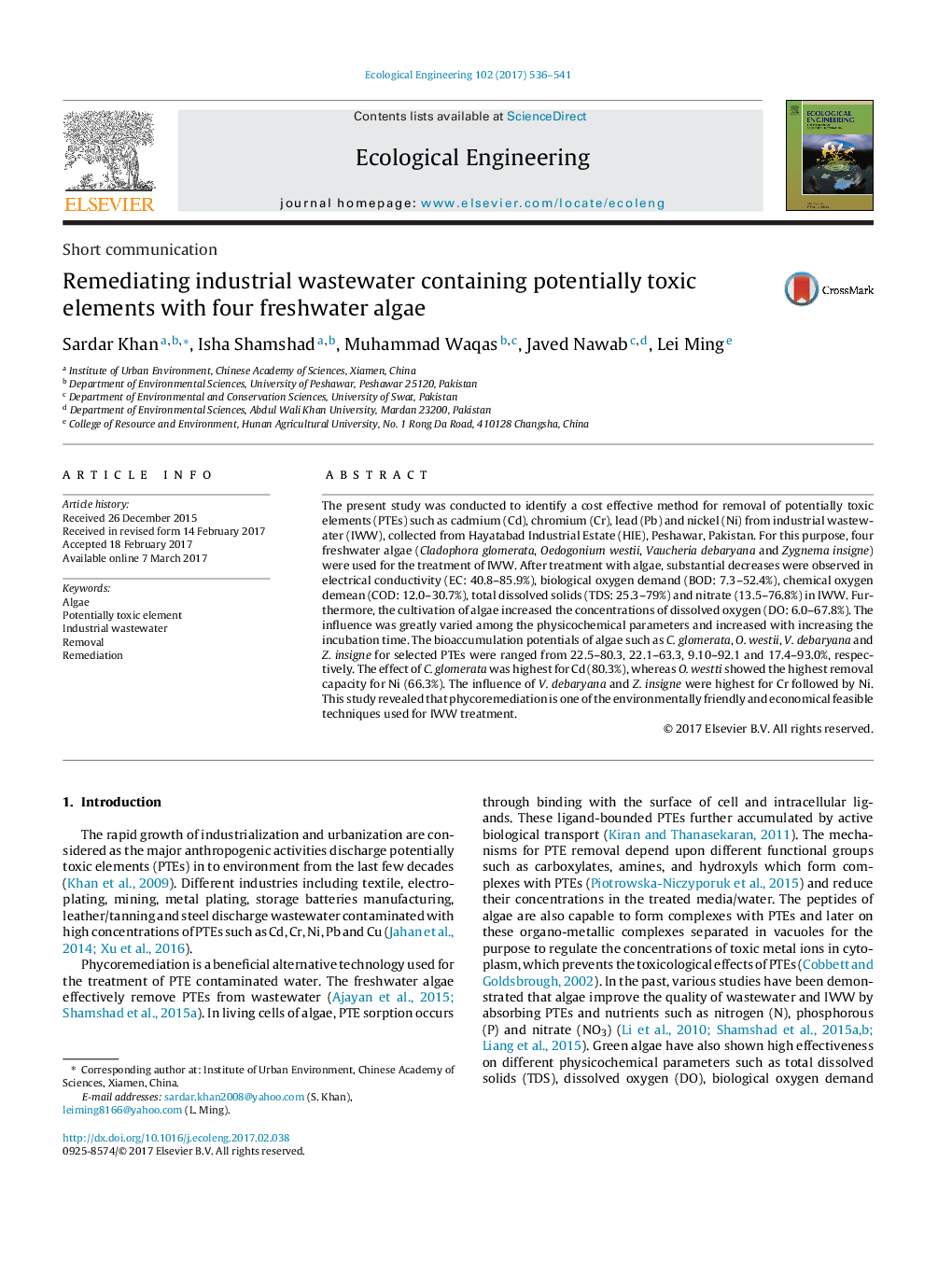| کد مقاله | کد نشریه | سال انتشار | مقاله انگلیسی | نسخه تمام متن |
|---|---|---|---|---|
| 5743799 | 1617997 | 2017 | 6 صفحه PDF | دانلود رایگان |
- The efficacy of four green algae for industrial wastewater treatment was determined.
- Substantial changes were observed in the values of physicochemical parameters.
- The effect of C. glomerata was highest for Cd (80%), while O. westti for Ni (66%).
- The influence of V. debaryana (92%) and Z. insigne (93%) was highest for Cr.
- This study revealed the effectiveness of phycoremediation for the treatment of IWW.
The present study was conducted to identify a cost effective method for removal of potentially toxic elements (PTEs) such as cadmium (Cd), chromium (Cr), lead (Pb) and nickel (Ni) from industrial wastewater (IWW), collected from Hayatabad Industrial Estate (HIE), Peshawar, Pakistan. For this purpose, four freshwater algae (Cladophora glomerata, Oedogonium westii, Vaucheria debaryana and Zygnema insigne) were used for the treatment of IWW. After treatment with algae, substantial decreases were observed in electrical conductivity (EC: 40.8-85.9%), biological oxygen demand (BOD: 7.3-52.4%), chemical oxygen demean (COD: 12.0-30.7%), total dissolved solids (TDS: 25.3-79%) and nitrate (13.5-76.8%) in IWW. Furthermore, the cultivation of algae increased the concentrations of dissolved oxygen (DO: 6.0-67.8%). The influence was greatly varied among the physicochemical parameters and increased with increasing the incubation time. The bioaccumulation potentials of algae such as C. glomerata, O. westii, V. debaryana and Z. insigne for selected PTEs were ranged from 22.5-80.3, 22.1-63.3, 9.10-92.1 and 17.4-93.0%, respectively. The effect of C. glomerata was highest for Cd (80.3%), whereas O. westti showed the highest removal capacity for Ni (66.3%). The influence of V. debaryana and Z. insigne were highest for Cr followed by Ni. This study revealed that phycoremediation is one of the environmentally friendly and economical feasible techniques used for IWW treatment.
264
Journal: Ecological Engineering - Volume 102, May 2017, Pages 536-541
